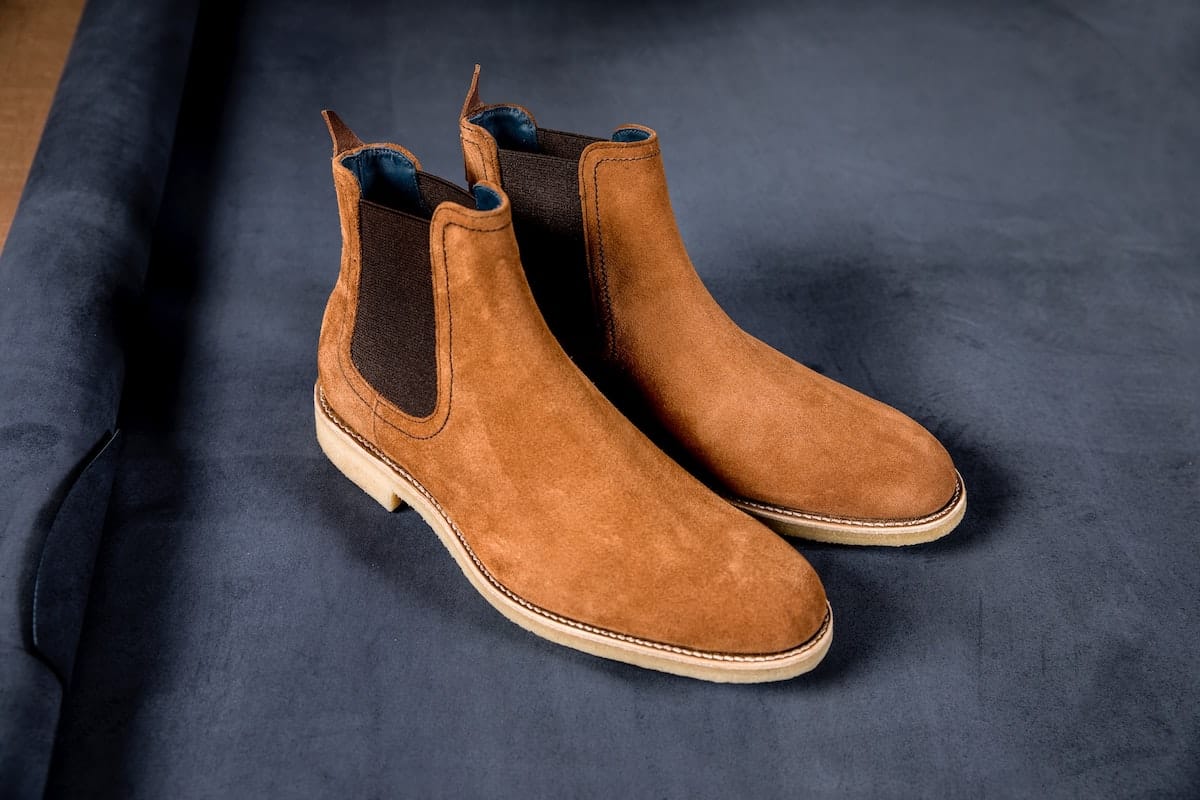There are few items in the men’s wardrobe that can connect reigning monarchs and rock stars. However, attracting such diverse users has been one of the most significant achievements of Chelsea boots.
A bit of history behind
English men’s shoes are rightfully considered an example of good taste and a standard of conservative elegance. Neatly arranged on wooden shelves in some branded stores, with the right surroundings, they are sometimes perceived as antique pieces of art, rather than boots designed for everyday wardrobe. And often this is exactly the case when the form corresponds to the content, and behind the usual outlines lies a rich and full history of remarkable facts.
Chelsea Boots are designed by British Queen Victoria shoemaker J. Sparkes Hall. A patent issued to him in 1951 describes the model as ankle-high elastic boots, indicating that no previously known model provided the foot with such dynamic mobility, repeating its natural anatomical shape. Distinctive features of this shoe were flexible rubber inserts on the sides, which made it possible to take it on and off in one motion, as well as an elongated pointed toe.
Advertising his invention, the royal shoemaker never tired of being proud that Her Majesty walks in his shoes every day, which is irrefutable proof of their exceptional value. Thanks to their practicality and refined silhouette, Chelsea boots later became an element of the sophisticated style of the English aristocracy for horseback riding and polo.
These boots have gained iconic status thanks to the Liverpool Fab Four. The Beatles often visited Kings Road, and one day the attention of Lennon and McCartney was attracted by unusual men’s leather semi-boots, showing off in the window of one of the stores.
Going back to the 1850s, ankle boots (as they were then known) were invented by Queen Victoria shoemaker Joseph Sparks-Hall as an alternative to lace-up riding boots, which were almost impossible to remove without assistance. The Victorians are big fans of practicality as well as prudishness, so they simply added a comfortable elasticated ankle to the short boot shape.
The name we use to describe these shoes today comes from the name of the London Borough of Chelsea in the UK, which is no surprise since they were the de facto king of shoes there from the 1950s to 60s.
What to look for when choosing Chelsea
It’s no surprise that they’ve become mainstream given their amazing versatility among the types of shoes found in the men’s wardrobe. The model’s sleek silhouette, meticulously polished to a high sheen, looks just as great as the slightly worn version for a rock ‘n’ roll vibe.
Of course, it’s not as easy as picking up any old pair of shoes – no, you need to look for certain signs before reaching into your pocket for money. The quality of the material is the most important factor when buying Chelsea boots. R.M.Williams men’s suede boots will age well with time and are easy to polish, adding character to your look.
When it comes to choosing suede, length matters: in this case, the shorter the better. Short-haired suede is a sign of quality and will last longer than long-haired suede, which gets dirty quickly.
You can tell a lot about the quality of Chelsea boots from the shape of their toes. The curved shape created by heat and pressure on the front of the boot is key. Any thick seams or folds in the lining can rub with wear, so always try shoes on before buying to check the smoothness of the inside.
How to wear Chelsea boots
As with any piece of menswear that is considered heritage, when designing an outfit, you need to be careful about choosing the pieces that go with it. Wear Chelsea boots with plain jeans, a white t-shirt, and a shirt thrown over the top. Everything is simple.
However, if you want to draw attention directly to the shoe, what you wear comes into play, as well as the height of the boot. Extended ankle length is on trend these days and adds an elegant touch for a more sophisticated style. They look great with skinny or skinny jeans, a pressed Oxford shirt and a smart wool coat.


